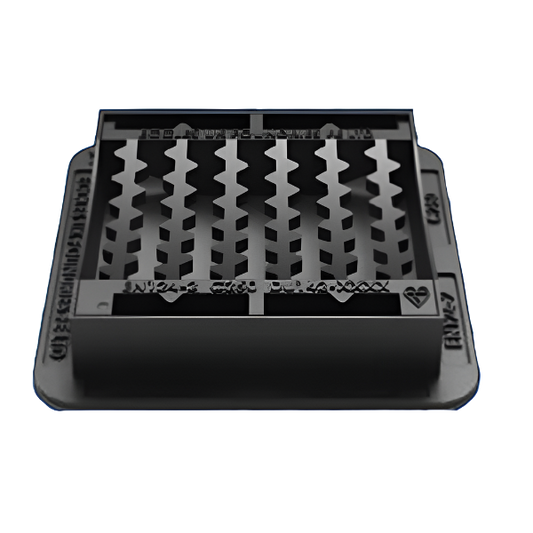Frequently Asked Questions
What are C250 manhole covers suitable for?
C250 manhole covers are designed for use in areas with light to medium vehicular and pedestrian traffic, such as urban streetscapes, pavements, and car parks. They are capable of handling the weight and pressure associated with everyday traffic, making them robust enough for various environments.
However, C250 manhole covers are not recommended for use on motorways or areas with heavy traffic loads. For such high-load environments, covers with a higher rating, such as D400 or above, are necessary to ensure durability and safety.
The C250 covers strike a balance between durability, safety, and cost-effectiveness, making them a good choice for urban infrastructure projects.
For further details and guidance on selecting the appropriate manhole cover for your needs, you can contact Cotterill Civils for expert advice.
How are C250 covers installed and maintained?
Installing C250 manhole covers involves carefully placing the cover over the manhole opening and ensuring that it’s even with the surrounding surface. This alignment is important to prevent people from tripping and avoid vehicle damage.
Once in place, the cover is typically secured with a locking mechanism or bolts to prevent unauthorised access and enhance safety. The C250 cover and frame must be properly installed to provide a stable base, usually embedded in concrete or the road surface.
Maintenance is straightforward, with features designed for easy lifting or removal, facilitating inspections, cleaning, and repairs of utilities like drainage systems and electrical conduits.
Regular maintenance checks are crucial to prevent corrosion or damage, ensuring the cover's structural integrity and functionality over time. Proper installation and upkeep are essential for the long-term reliability and safety of these covers.
Who is responsible for maintaining manhole covers?
The responsibility for maintaining manhole covers typically falls on the organisation or entity that owns the underlying infrastructure. This can include:
- Local council: In most urban areas, your local council is responsible for the maintenance of manhole covers. This includes regular inspections, cleaning, and repairs to ensure safety and functionality. They manage covers on public roads, pavements, and other properties.
- Utility companies: When manhole covers provide access to utilities such as water, sewage, electricity, or telecommunications, the respective utility company is often responsible for their upkeep. These companies must ensure their infrastructure remains accessible and in good condition to facilitate maintenance and repairs.
- Private property owners: On private property, the property owner is typically responsible for any manhole covers present. This includes ensuring that the covers are maintained and safe for use, especially in areas accessible to the public or employees.
- Contractors and developers: In new developments or construction projects, contractors or developers may be responsible for the installation and initial maintenance of manhole covers until they are handed over to the relevant authorities or property owners.
If you’re unsure of your manhole cover, talk to the team at Cotterill Civils and we’ll be happy to discuss any questions further.
What materials are used in C250 manhole covers?
C250 manhole covers are predominantly manufactured from ductile iron, a material renowned for its exceptional strength and durability. Ductile iron is chosen for its ability to provide a balanced combination of toughness and relatively low weight, making it easier to handle during installation and maintenance.
This material is also highly resistant to corrosion, which is essential for the longevity of the covers, especially in harsh environmental conditions or where exposure to chemicals is a concern.
The use of ductile iron in C250 manhole covers ensures that they meet the stringent requirements of the BS EN124 Class C250 standard. The adherence to these standards underscores the quality and reliability of C250 manhole covers, making them a trusted choice for municipal and commercial infrastructure projects.






